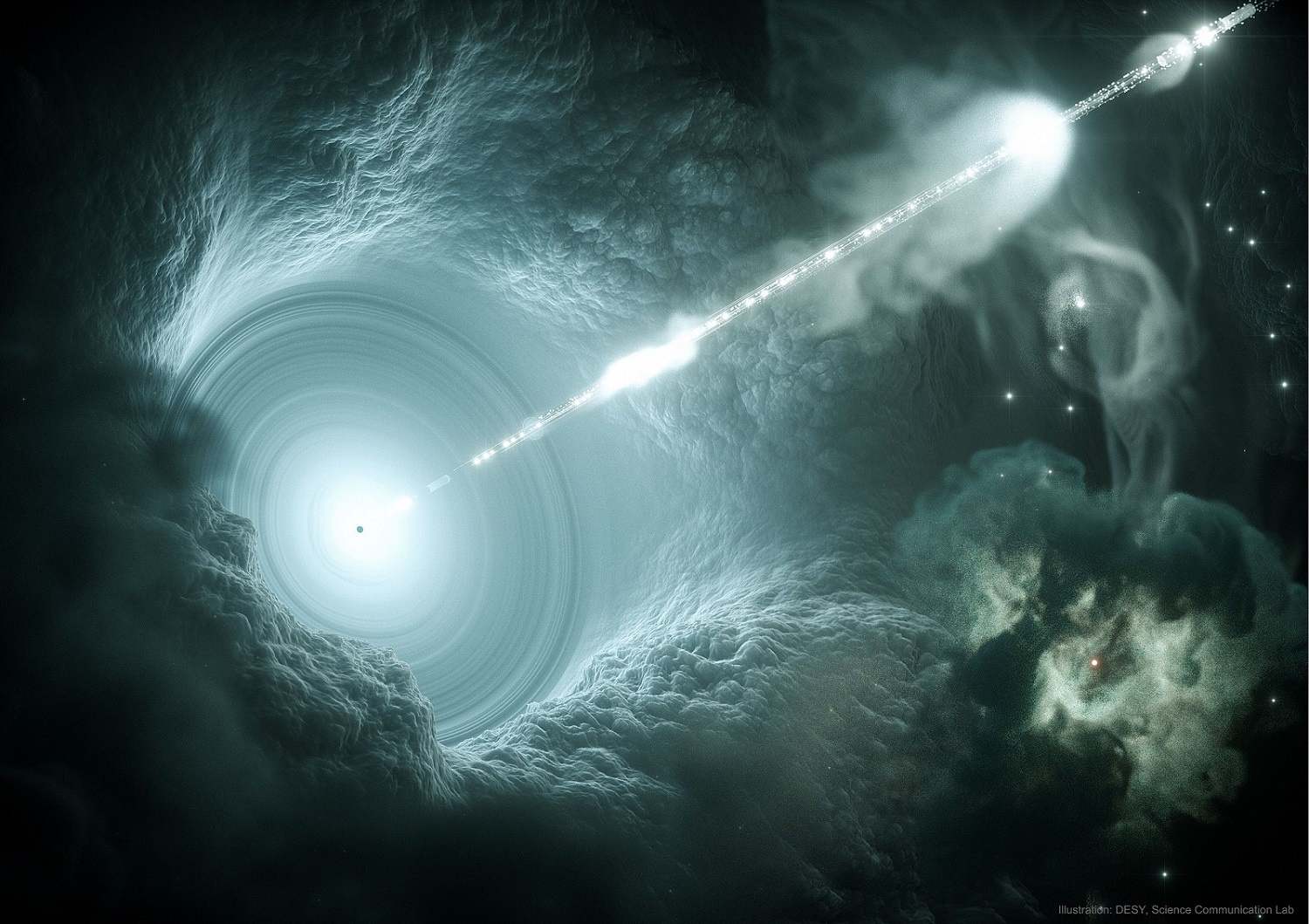At the heart of most massive galaxies in our Universe, there are supermassive black holes (SMBH) on the order of millions to billions of times the mass of the Sun. As these behemoths consume gas and dust that’s slowly fed into their maws, they release tremendous amounts of energy. This leads to what is known as an Active Galactic Nucleus (AGN) – aka. a quasar – which can sometimes send hypervelocity jets of material for light-years.
Since they were first discovered, astrophysicists have suspected that SMBHs play an important role in the formation and evolution of galaxies. However, as a result, there has also been considerable research dedicated to how these massive objects form and evolve themselves. Recently, a team of astrophysicists conducted a high-powered simulation that showed exactly how SMBHs feed and determined that a galaxy’s arms play a vital role.
The study that describes their research was published on Aug. 17th, in The Astrophysical Journal. The team was led by Daniel Anglés-Alcázar, an assistant professor of physics and astronomy at the University of Connecticut and former Fellow with the Center for Interdisciplinary Exploration and Research in Astrophysics (CIERA). He was joined by Claude-André Faucher-Giguère, an Associate Professor at Northwestern University and a CIERA member.
Faucher-Giguère is also the leader of Northwestern’s Faucher-Giguère Galaxy Formation Group, where Malcázar was a member and where work on the simulation began. Other members included astronomers and physicists from MIT, Caltech, the Harvard-Smithsonian Center For Astrophysics (CfA), the Institute for Advanced Study, the Flatiron Institute’s Center for Computational Astrophysics, and multiple universities.
In addition to being incredibly massive and powerful, SMBHs are also known for having a mighty appetite and can consume 10 Solar masses of material in just one year. But whereas some enjoy a continuous supply of gas, others will go dormant for millions of years, then reawaken due to a sudden influx of gas. Until now, the details of how gas flowed through the cosmos to feed SMBHs have remained a long-standing mystery.
To address this, Anglés-Alcázar and his fellow researchers created the first simulation powerful enough to simulate all the physical processes involved. These included the Hubble-Lamaitre Constant (expansion rate of the Universe), the large-scale environment of the cosmos, gas hydrodynamics, feedback from massive stars, and gravity, all into one model. As Anglés-Alcázar explained:
“Powerful events such as supernovae inject a lot of energy into the surrounding medium, and this influences how the galaxy evolves. So we need to incorporate all of these details and physical processes to capture an accurate picture. Other models can tell you a lot of details about what’s happening very close to the black hole, but they don’t contain information about what the rest of the galaxy is doing or even less about what the environment around the galaxy is doing. It turns out, it is very important to connect all these processes at the same time.”
The team’s simulation builds on previous work by the “Feedback In Realistic Environments” (FIRE) project, which creates simulations designed to improve the predictive power of galaxy formation. One of the burning questions the projects seeks to address is the properties of inflows and outflows and feedback mechanisms, both of which were of major importance to this study. As Faucher-Giguère explained in a recent Northwestern Now press release:
“The light we observe from distant quasars is powered as gas falls into supermassive black holes and gets heated up in the process. Our simulations show that galaxy structures, such as spiral arms, use gravitational forces to ‘put the brakes on’ gas that would otherwise orbit galaxy centers forever. This breaking mechanism enables the gas to instead fall into black holes and the gravitational brakes, or torques, are strong enough to explain the quasars that we observe.”
The new simulation offered greatly increased model resolution and allowed the research team to simulate gas flows across the Milky Way with over 1,000 times more accuracy. While previous simulations have been able to model the growth of black holes, this is the first one powerful enough to comprehensively account for the numerous forces and factors that are part of an SMBHs evolution. As Faucher-Giguère explained:
“The very existence of supermassive black holes is quite amazing, yet there is no consensus on how they formed. The reason supermassive black holes are so difficult to explain is that forming them requires cramming a huge amount of matter into a tiny space. How does the universe manage to do that? Until now, theorists developed explanations relying on patching together different ideas for how matter in galaxies gets crammed into the innermost one millionth of a galaxy’s size.”
With these new simulations, researchers can finally model how this happens. For example, researchers could gain new insight into the origin of the SMBH at the center of the Milky Way (aka. Sagittarius A*) and the one at the center of the Virgo A Supergiant (Messier 87) galaxy – which became the first black hole ever to be imaged by the Event Horizon Telescope (EHT) in 2019.
In addition, these simulations provide rare insight into the mysterious nature of quasars, which are luminous to the point that they outshine entire galaxies. At their cores and powering their famous luminosity are fast-growing supermassive black holes, the origins of which are still not well-understood. Looking ahead, the research team hopes to study large statistical populations of galaxies and their SMBHs to learn more about how they form and grow under various conditions.
Further Reading: Northwestern Now, The Astrophysical Journal

